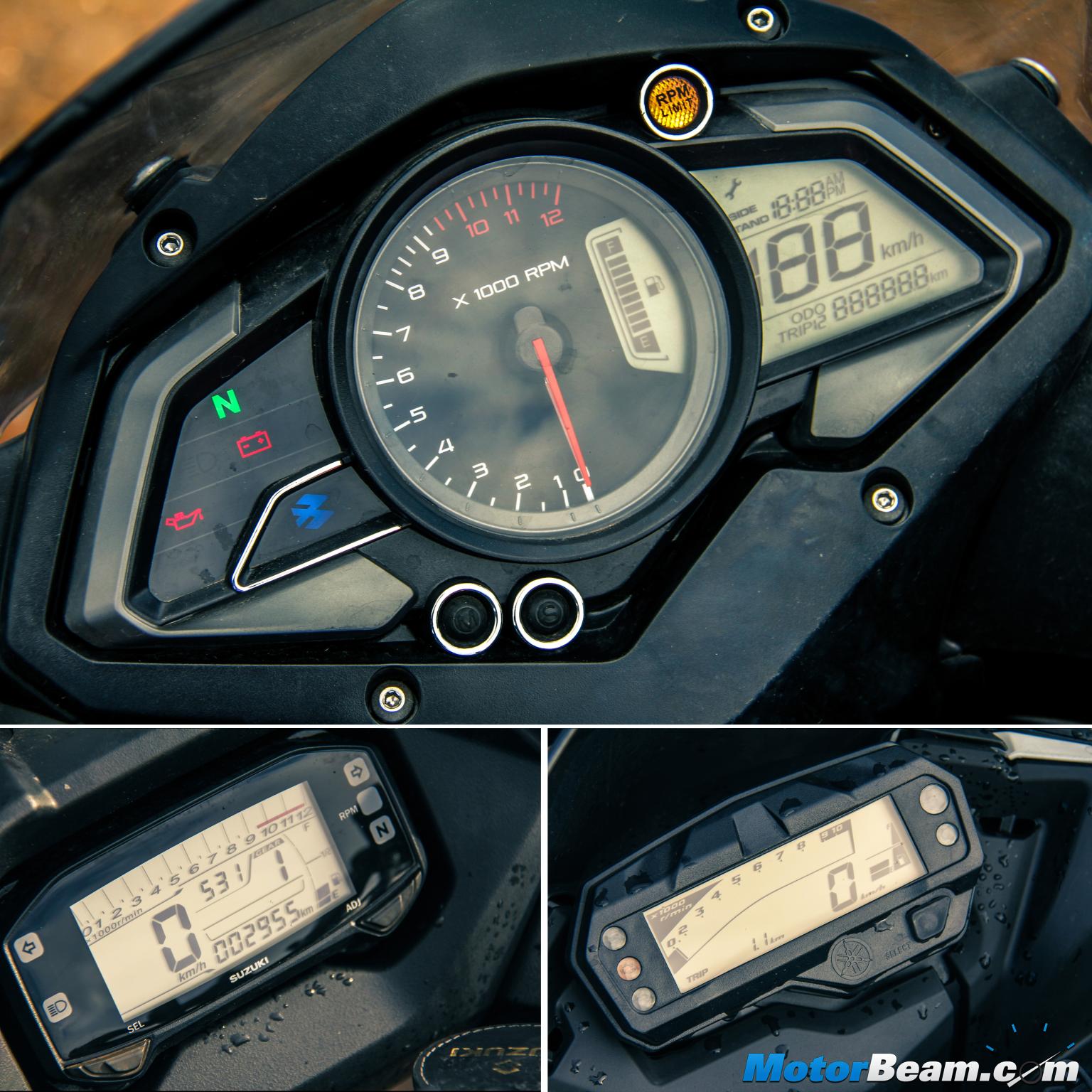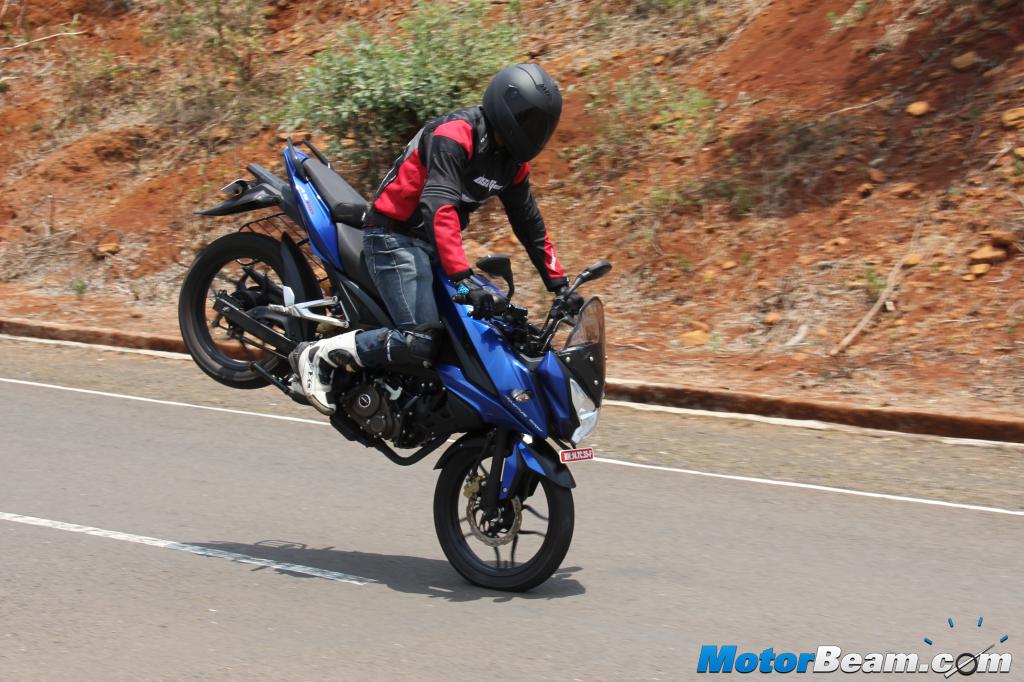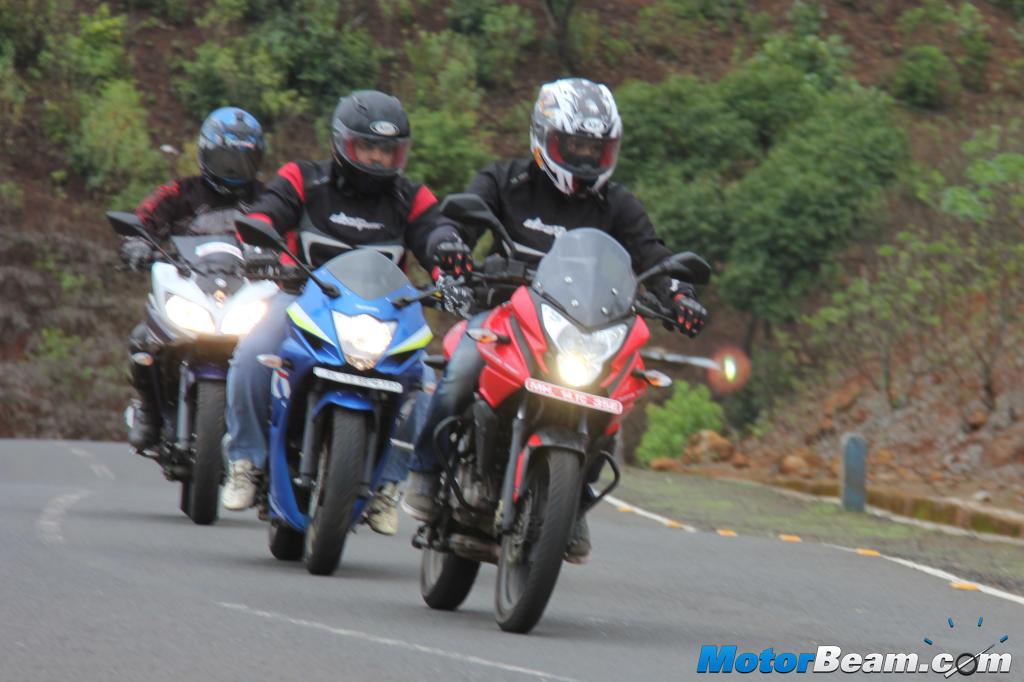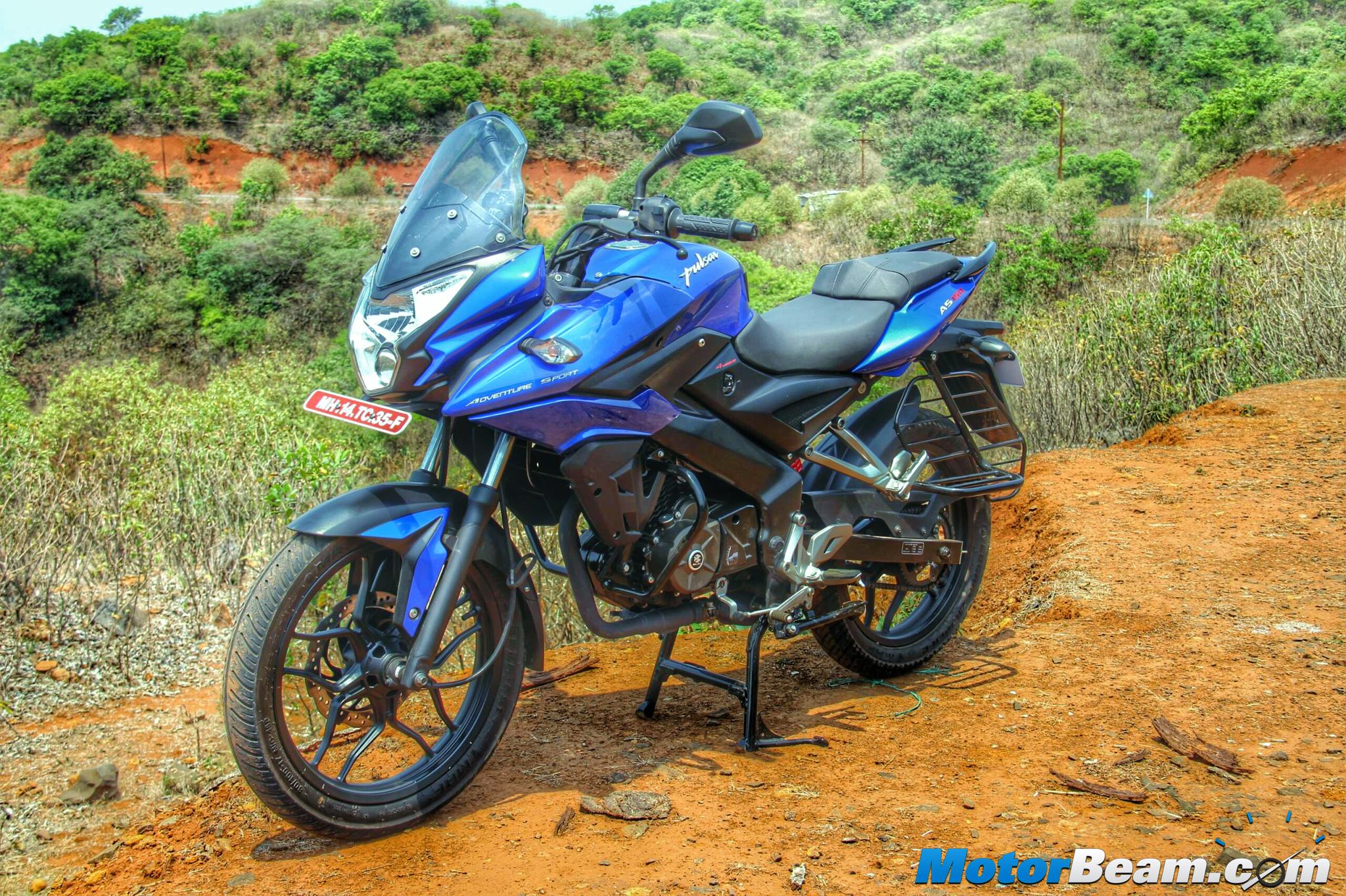
Shootout: Suzuki Gixxer SF vs Pulsar AS 150 vs Yamaha Fazer
Price OTR Mumbai: Rs. 91,640/- (Pulsar AS 150), Rs. 1,00,140/- (Suzuki Gixxer SF), Rs. 1,02,570/- (Yamaha Fazer V2)
The Gixxer SF looks like a winner, the Pulsar AS 150 is power packed while the Fazer V2 is high on tech & is a very refined motorbike
If James Bond can do it all then 150cc bikes are the 007 of the Indian motorcycle industry. We say that because the 150cc space is so unique wherein there are commuter bikes (Bajaj Discover 150, Suzuki GS150R), premium commuters (Suzuki Gixxer, Yamaha FZ V2, Honda CB Unicorn 160), sports bikes (Yamaha R15, Honda CBR150R) and now tourers. Yes, that’s right, 150cc bikes are now turning into touring machines but the trend isn’t new because Yamaha started it with the Fazer (remember the Touring Spirit tagline?), Suzuki followed it with the Gixxer SF (not positioned as a tourer but a street sport bike) and Bajaj Auto came up with the Pulsar AS 150, a bike which carries the Adventure Sport tag in its very name. Among these three super premium 150cc commuters, we find the motorcycle which strikes the best balance of everything.
Motor Quest: The Yamaha Fazer was launched in 2009 while the Version 2.0 of the motorcycle went on sale in 2014. The Suzuki Gixxer SF was launched in April 2015 while in the same month, Bajaj launched the Pulsar AS 150. All these three bikes are cosmetically enhanced variants of their street-fighter siblings, the Yamaha FZ, Suzuki Gixxer and yet to be launched Pulsar 150 NS.
The Fazer looks wide thanks to twin headlights while the Gixxer reminds one of the Busa
Styling – The Pulsar AS 150 is the longest, widest and tallest motorcycle here because it draws its design inspiration from its elder sibling, the Pulsar AS 200. But where the Adventure Sport Pulsar lacks is tyre size, it comes with smaller 80 and 110 section tyres at the front and rear respectively while the Yamaha Fazer and Suzuki Gixxer SF come shod with 100 and 140 section tyres at the front and rear respectively. There are some nice design elements on the Pulsar like a big windshield visor that gives the touring feel and it also gets a projector headlight for better illumination on the highway. The Pulsar also gets a hinge for the fuel lid which is missing in the Japanese bikes even though the Gixxer SF and Fazer are costlier.
The Pulsar’s rear-end is too generic now, the SF looks very neat indeed
The Gixxer SF is a stunning looking bike & turns way more heads
The Pulsar AS 150 and Yamaha Fazer have some similarities between them like the semi-fairing and split seats while the Suzuki Gixxer SF has a one-piece seat and is full-faired. The AS 150 gets an underbelly exhaust while the Japanese bikes use the conventional side mounted units. The Pulsar is a good looking bike but in this company, it comes third as far as styling goes. The Fazer is an attractive looking bike with its twin headlights giving a sporty feel to it while also making it look wider than it is. But ask anyone which bike makes them give a second look and the universal consensus is the Gixxer SF. The Suzuki looks like a Hayabusa from certain angles and has some interesting design elements like the superbike type exhaust and rim tape. There is no denying, in these MotoGP colours, the Gixxer SF is simply irresistible.

Instrument Cluster and Switchgear – The Japanese bikes get an all digital instrument cluster which looks a lot like a smartphone with the Gixxer SF having a bigger screen. The FZ’s console is easy to read but misses out on crucial things which are present on both the other bikes here, the Yamaha not getting an engine shift light, clock and a second trip meter. The Gixxer greets you with “Ready GO” on the console on start-up and also gets a gear position indicator while the Adventure Sport bike has a side stand warning and a service due reminder. The Pulsar AS 150 uses an analogue digital instrument cluster where the tachometer is analogue, making it very easy to read. The Bajaj bike also gets backlit switches which although missing on the Japanese bikes isn’t much of a deal because the Fazer and Gixxer not only have better switchgear quality but also boast of better fit and finish levels, as the Pulsar has some uneven panel gaps on its fairing.
Upright seating position makes these 150cc motorcycles very comfortable
Ergonomics – Since the Pulsar AS 150 and Yamaha Fazer are vocally called as tourers by their respective manufacturers, their seating position is set upright, offering very good comfort. The Gixxer SF being a street bike in Suzuki’s eyes, also boasts of very comfortable ergonomics. Thus, among these three bikes, it’s hard to choose one in the ergonomics department as all three have an upright riding position. But what makes a difference is the seat height, the Gixxer SF is the lowest at 780 mm while the Fazer has a 790 mm tall seat, the Pulsar AS 150 having the highest at 807 mm, making the Bajaj more suited to tall riders. All three bikes get split grab rails and pillion comfort is the best on the Fazer while the Pulsar gets alloy footrests. But in terms of overall comfort, the Gixxer SF has the best seat and due to its lower height, suits all kinds of riders too.
These bikes are very different when it comes to performance but have their USPs
Performance – The Suzuki Gixxer SF carries a conventional engine as it’s a 2-valve carb unit while the Pulsar AS 150 uses 4-valves and the Fazer has a fuel-injection system on board. Displacing 154.9cc, the Gixxer SF produces 14.8 PS of power but the highest torque of 14 Nm. Meanwhile the 149.5cc, dual-spark motor of the Pulsar AS 150 is the most powerful with 17 PS of power but torque is down at 13 Nm. The fuel injected Yamaha is the lowest on output, both in terms of power and torque, generating 13.1 PS and 12.8 Nm respectively. But to Yamaha’s advantage is the NVH as it is the best here, the Fazer being the most refined bike of the trio, offering the best fuelling too. It is followed by the Suzuki while the Bajaj comes in third. But it’s the Gixxer SF which sounds the best while the Pulsar is the loudest and the Fazer a bit tamed down.
And when you give them the stick, these 150cc bikes literally rise up
The Fazer has unmatched smoothness, the Gixxer SF is the fastest while the AS 150 is the most frugal
The Fazer has the best low-end punch here making it the best in the city while the Suzuki and Bajaj come strong in the mid-range, the Gixxer SF having a stronger punch while the Pulsar AS 150 needs to be revved hard to extract the best, the top-end being the Pulsar’s strong suit. It also boasts of the highest redline of 11,000 RPM here while the Japanese bikes have their rev limiter kicking in at 10,000 RPM. So when you run these bikes from standstill to a quarter-mile on full throttle, it’s the Gixxer SF which annihilates the other two to the finish. The Fazer V2 finishing last is no surprise as it does the 0-100 km/hr sprint in a laid back 20.4 seconds. Meanwhile the Pulsar AS 150 takes 18.27 seconds and the Gixxer SF is the quickest of the lot at 16.89 seconds. The surprise though is the Pulsar AS 150 is actually quicker than the Suzuki (thanks to a smaller contact patch) till 60 km/hr but starts losing out post that.
The Fazer has good low-end, the Gixxer a strong mid-range while the AS 150 has top-end
The Yamaha Fazer has the lowest top speed of 107 km/hr while the Pulsar AS 150 managed to do 115 km/hr and the Gixxer SF did an impressive top whack of 125 km/hr, aided by its aerodynamic full fairing. Both the Fazer and Pulsar need a quick downshift when you slow down too much but the Gixxer SF does manage to pull in the same gear thanks to its higher torque and peak power coming earlier than the 4-valve engined bike. All bikes use a 5-speed gearbox with the Suzuki’s being the best, followed by the Yamaha and the Pulsar coming in last as it lacks feedback when shifting. The Japanese bikes come with fuel enhancing technology which is SEP for Suzuki and Blue Core for Yamaha, they also get an Eco mode indicator (the Fazer’s is more visible while the one on the Gixxer SF is on the console and difficult to spot). In spite of this, it’s the Pulsar AS 150 which is the most frugal bike here, returning 52 km/l against the second place finishing Fazer (48 km/l) while the Gixxer SF comes in last at 46 km/l. All bikes come with a 12-litre fuel tank.
All bikes handle well but the Japanese are in a league of their own with better dynamics
Riding Dynamics – The Japanese bikes are light weight in front of the Indian offering, the Pulsar AS 150 weighing 143 kgs while the Gixxer SF and Fazer tip the scales at 139 kgs and 137 kgs respectively. Bajaj has used the most superior hardware on its motorcycle with the AS 150 using a perimeter frame and getting clip-on handlebars. The Yamaha and Suzuki bikes are underpinned by a single downtube frame and are more stiffly sprung, using a traditional straight handlebar. Thus on paper, one would expect the Pulsar AS 150 to be the best handler but the Japanese bikes are easily one up on it. The Pulsar’s longer wheelbase, softer suspension and smaller tyres robs away the handling prowess that the Gixxer SF and Fazer V2 possess.
The Pulsar AS 150 has a softer suspension which gives it the best ride quality of the trio
The Gixxer SF has the best balance between good ride & sharp engaging handling
However, the Pulsar AS 150 is the best in terms of ride quality and with the Fazer being stiffer than the Suzuki, it can’t even match the Gixxer SF in terms of ride comfort, let alone the Bajaj bike. The Hayabusa maker has got the ride and handling balance spot on because the Gixxer SF is the best handler here and also supremely stable at speed, the Yamaha also showing composure at high speeds while the Pulsar isn’t as surefooted but does transmit the least windblast to the rider. Braking performance on the Fazer is the best, the Gixxer SF coming second while the smaller tyres on the Pulsar robs away stopping confidence as grip levels are inferior to its rivals.
The Japanese bikes are superior in engineering but the Pulsar AS 150 offers stellar value
Verdict – Let’s start with the bike which came third. There is not much needed to justify as to why the Yamaha Fazer loses out in this shootout. Being the most expensive bike (Rs. 2000/- and Rs. 11,000/- dearer than the Gixxer SF MotoGP edition and Pulsar AS 150 respectively), the Fazer simply falls short of its rivals. When Yamaha launched the Fazer, it had almost no competition but times have changed and the semi-faired Japanese bike doesn’t excel in front of the Gixxer SF or Pulsar AS 150, other than in refinement. This puts the fight to the top between the Pulsar and Gixxer, with the price difference between them being Rs. 6000/- (Rs. 8000/- when the MotoGP edition is considered). The Pulsar AS 150 definitely pleases the commuter by offering higher comfort, more goodies and a cheaper price. But the Gixxer SF is the more fun to ride bike with its punchy engine, better handling, superior quality and gorgeous looks. The extra you pay for the Suzuki seems worth every penny, making it our winner in this shootout.
The Yamaha Fazer loses out due to its lower performance and higher price while the Pulsar AS 150 doesn’t strike as good a balance as the Gixxer SF. While Bajaj has yet again offered value in spades, it is Suzuki which rules the 150cc segment yet again by offering a better motorcycle.
Which is the fastest in a quarter-mile? Check the drag race video below to find out
Testers’ Note:
Catch All The Latest Videos, Subscribe To
Riders: Hrishi Mandke, Viraj David, Tejas TJ, Sameer Phadtare, Omkar Jadhav; Picture Editing: Sri Manikanta Achanta
Further Reading –
Pulsar AS 150 vs Suzuki Gixxer SF vs Yamaha Fazer – Video
Suzuki Gixxer SF Review
Pulsar AS 150 Review
Yamaha Fazer Review
Pulsar AS 150 Video Review




